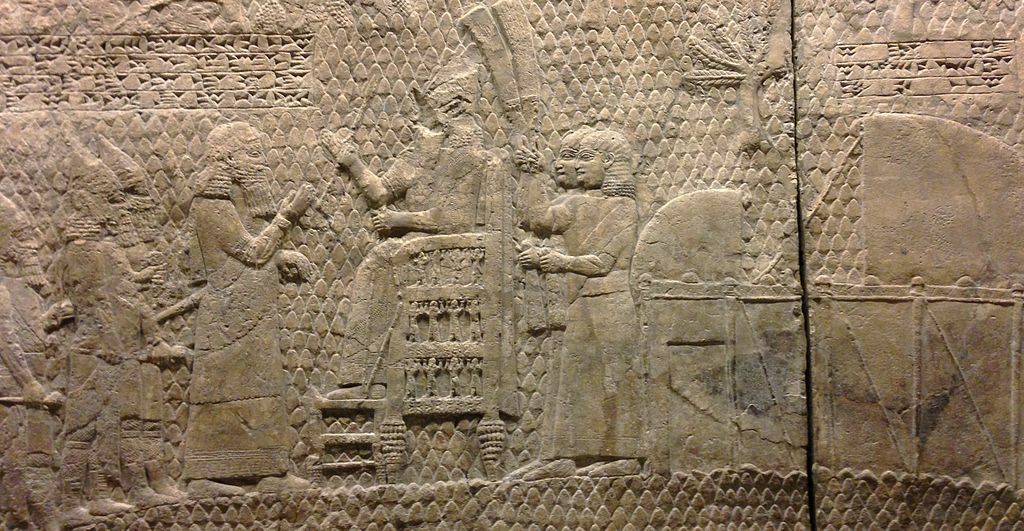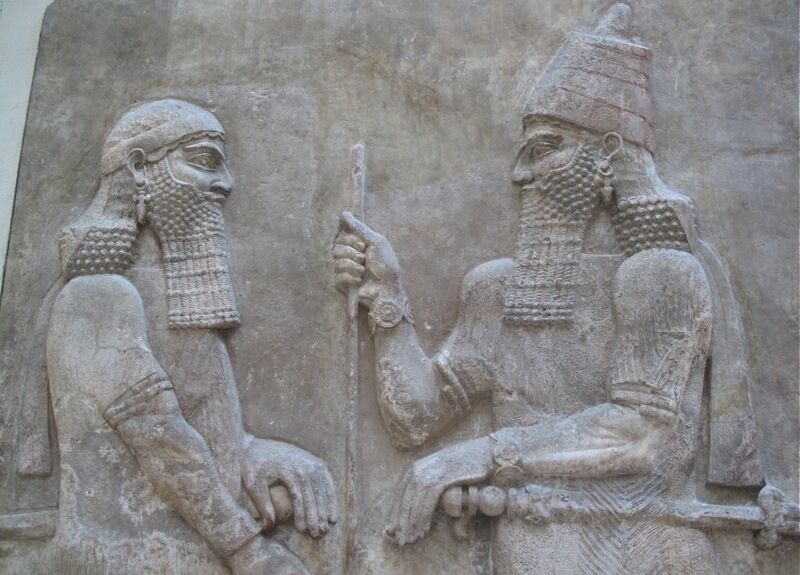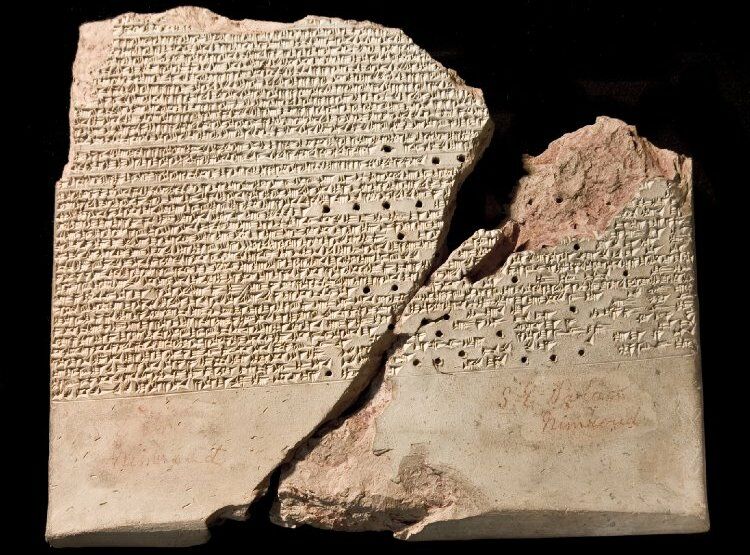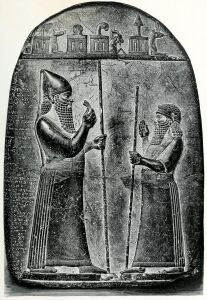The War Between Assyrian and Biblical Chronology
Those who delve into the biblical record of kings Hezekiah and Sennacherib and compare it with the Assyrian account of their reigns will see an astounding number of parallels and corroborated events—from cities conquered to the saving of Jerusalem (“miraculous,” both to Bible believer and critic) to precisely matching receipts of tribute.
What seems to stand somewhat at odds, however, is not the events of their kingship—it is the precise chronologies of those events. In this article, we will briefly lay out the controversy and offer an explanation for the apparent discrepancy.
Regnal Dates
Neo-Assyrian chronology has been clearly mapped out year by year using preserved Eponym Lists, otherwise known by their Assyrian name as “Limmu” lists (as pictured in the cover image). These lists describe a chief event for every calendar year. Alongside these are the Assyrian King Lists, which record the successive kings and regnal lengths. The chronology relating the eighth to seventh century b.c.e.—the century which we are concerned with here—is confidently dated. Notably, it is rooted to an eclipse described in the lists, one that astronomers have determined occurred in 763 b.c.e. From this date, the reigns of the following kings can be accurately dated. According to the lists, the Assyrian kings for the last half of the eighth century b.c.e. were as follows, plus or minus one year:
- Tiglath-Pileser iii, 745–727 b.c.e.
- Shalmaneser v, 727–721 b.c.e.
- Sargon ii, 721–705 b.c.e.
- Sennacherib, 705–681 b.c.e.
It has been well established from these lists, the Bible and other sources that the final destruction of the northern kingdom of Israel by Assyria happened over a three-year period, started at the end of Shalmaneser’s reign (2 Kings 18:9) and completed by Sargon: 721–718 b.c.e. The Bible relates that this event happened during the fourth to sixth years of King Hezekiah’s reign over Judah (same verse). Using these grounded dates, we can fill in the biblical chronology for Hezekiah’s reign. Hezekiah’s reign must have begun in 725/4 b.c.e., and the Bible states that he reigned for 29 years (verse 2).
The ‘Problem’
However, an apparent contradiction appears in 2 Kings 18:13:
Now in the fourteenth year of king Hezekiah did Sennacherib king of Assyria come up against all the fortified cities of Judah, and took them.
Therein lies the rub. The 14th year of Hezekiah is circa 710 b.c.e., when King Sennacherib was supposed to have conquered the cities of Judah. But King Sennacherib, according to the Assyrian records, began his reign in 705 b.c.e. As such, most archaeologists and Assyriologists date the conquest of Judah around 701 b.c.e.—nearly a decade after where we would expect the invasion, according to the biblical account.
Again, all the evidence of the event precisely matches the Bible account (right down to tribute receipts and strategic Israel-Philistine-Egypt alliances). You could argue that it is the most extensively “proved” period in the Bible. But, the date.

In the grand scheme of things, a less-than-10-year-discrepancy for an event over 2,700 years old isn’t bad. But of course, in the continual quest for precise answers, there has been much controversy.
Some researchers discard the biblical dates as fictitious. But this would be a mistake.
The biblical chronology is arguably even more detailed, definitively written, and well established—it certainly didn’t come from nowhere. There was a reason for it, and the dates that were given—whether one is a “believer” or not, whether one believes in an earlier traditional date of writing for the Scriptures, or a later date. There was a source material.
The Assyrian records aren’t infallible either—there are certain recognized inconsistencies in the lists (though primarily for the second millennium b.c.e.).
Still, two centuries ago, we wouldn’t even be having this debate.
The Sargon Issue
That’s because King Sargon ii was then unknown to archaeology—unlike Shalmaneser v and Sennacherib, on either end of his reign.
But “unknown” is not actually the full story. Because Sargon was known historically—from a single biblical reference (Isaiah 20:1). Not even the historian Josephus mentions him in his exhaustive writings on the history of the Jews. He was totally unrecognized in classical histories. As such, the Bible was singled out for this fictional reference—either that, or for using an obscure name for another Assyrian king entirely.
Today, however, King Sargon ii is known as one of the most significant kings of eighth-century b.c.e. Assyria—since the deciphering of cuneiform in the late 19th century, and the excavation of his chief city, Dur-Sharrukin.

We now know that following the reign of Sargon ii, there was a concerted effort—apparently led by his son—to blot out his reign. It turns out Sargon had met with a disastrous defeat and death in 705 b.c.e.—and as such, it seems an extremely superstitious Sennacherib attempted to scrub remains of his father’s rule, in order to appease the gods and give himself better standing.
(That’s what actually makes the Bible quite special—the good, the bad and the ugly is dutifully recorded, even for the greatest “heroes” like David, Hezekiah, Moses and Noah.)
The point is, the Assyrian kings were not necessarily bastions of honesty and perfect chronology. Based on the admitted honesty of the Bible account alone, one could argue that it would make more sense to bias toward the biblical account.
In the years since Sargon’s existence was “validated,” archaeologists have been able to find additional evidence for more accurate Assyrian dates. Limmu Lists and other texts have been found and synchronized alongside the king lists. There is now a lot more accuracy.
So which chronology is right?
Explanations
People have tried to settle this discrepancy a number of ways. One relatively popular idea is the “two-campaign” theory: that Sennacherib came against Judah in 710 b.c.e. as a coregent, was successfully paid off at Lachish to stop the campaign by Hezekiah (2 Kings 18:13-14), and did not attack Jerusalem until nearly a decade later, 701 b.c.e. This theory has its issues, though. It requires a major reshuffling of the text in 2 Kings, 2 Chronicles and Isaiah, complicating the story flow (not to mention reshuffling Sennacherib’s single description of these events in Judah and Jerusalem on his prisms). 2 Kings 18:16-17 describes Hezekiah’s tribute payment immediately failing, and an army sent straight from Lachish to Jerusalem.
Furthermore, Hezekiah’s miracle healing also happened in the 14th year of his reign (around 710 b.c.e.—the king was given an extra 15 years of life, making for a total reign of 29 years). 2 Kings 20:6 and Isaiah 38:6 say that, at this time of healing, God would deliver Jerusalem “out of the hand of the king of Assyria” and would “defend this city.” This shows that Assyria was directly threatening Jerusalem at the time, and that this city was under duress and to be spared—no mention is made here of the cities of Judah in general, which had already been taken. This all fits best with a single campaign, all happening in the 14th–15th years of Hezekiah’s reign, circa 710 b.c.e.

Another theory is that the traditional anchor date for the Assyrian Limmu Lists is wrong. That the 763 b.c.e. dating for the eclipse should in fact be changed to another eclipse that happened in 791 b.c.e. This would then place the death of Sennacherib in 709 b.c.e.—a tantalizing option, considering the Bible describes Sennacherib’s death directly after the account of the failed invasion of Judah. However, moving the eclipse date causes more problems than it solves. It means that Shalmaneser couldn’t have started the conquest of the northern kingdom of Israel (2 Kings 18:9), and that Tiglath-Pileser couldn’t have received tribute from Ahaz (2 Kings 16:7)—both kings would have been and gone far too early.

Could one of the accounts be at fault? The mistake of an Assyrian or a Hebrew scribe, replicated through ensuing years—or perhaps a deliberate attempt at misinformation? Mark S. Haughwout, in his article “Hezekiah and Sennacherib,” wrote the following along these lines:
In the Assyrian accounts we know that various monarchs deliberately claimed the deeds of their predecessors for themselves, while at the same time recording their defeats as victories. The biblical writer’s willingness to record both victories and losses should automatically grant them greater trust.
So, what is the answer? As yet, further discoveries are needed to confirm the sequence of events. Laid out above is a brief summary of the issues needing to be resolved. Below, though, we will take a little time to speculate on an answer to this chronological question.
What if neither chronological account is necessarily wrong? What if the problem is simply forced interpretation?
The Co-Regency Question
Sennacherib was a high official during the reign of Sargon, his father. Clearly he would have been given much responsibility in the kingdom of Assyria (as perhaps depicted on the above wall relief, counseling with Sargon).
Based on the Limmu Lists, around 710 b.c.e. the Assyrians undertook a massive campaign against Babylon, overthrowing the ruler Merodach-Baladan, who fled for his life. Sargon then took over the throne and ruled from Babylon itself for the next three years. (The Assyrians held Babylon and the Babylonian gods in high esteem.) This could have left a vacuum in Assyria proper; Sennacherib could have filled this vacuum and reigned as co-regent “king” from this time.
This actually fits with another closely matching situation, nearly 200 years later, in Babylon. Recall the history of biblical King Belshazzar in the book of Daniel. The Bible is clear that Belshazzar was the last king of Babylon, before the Persian conquest (Daniel 5). But for hundreds of years, scholars ridiculed the proposition; they “knew” from inscriptions that Nabonidus was the last king of Babylon. That is, until the late 19th century, when a cylinder seal was discovered describing Nabonidus turning over rule of Babylon to his son, Belshazzar, while he was away for some years in another part of the kingdom. And it was under the rule of this co-regent that Babylon fell—just as the Bible says. (Here’s a top tip: Ridiculing the biblical account is never a great thing to do, professionally; there have been countless times that new discoveries have only served to embarrass the critics.)

Some may consider the suggestion of Assyrian co-regency more unlikely, but there is evidence that Assyrian rulership wasn’t always contiguous, that some overlap did occur. A 12th-century b.c.e. letter from a Babylonian king is addressed to the “kings of Assyria”—apparently at least two Assyrian individuals who were in a position of “king” over the empire. (There are also conflicting numbers given for reigns of this period on the Assyrian King Lists—perhaps likewise suggesting a co-regency.) This same idea may also apply to Sargon and Sennacherib, thus giving the reason for the Bible’s naming of Sennacherib as “king of Assyria” when he invaded Jerusalem in 710 b.c.e.
And a peculiar biblical verse actually seems to allude to a co-regency at this very time! 2 Chronicles 32:1-4 describe Hezekiah’s preparations for the Assyrian invasion of Judah:
And when Hezekiah saw that Sennacherib was come, and that he was purposed to fight against Jerusalem … [the people] stopped all the fountains, and the brook that flowed through the midst of the land, saying: ‘Why should the kings of Assyria come, and find much water?’ (verses 2, 4)
The passage clearly identifies Sennacherib as the power-player. Yet it pluralizes kings of Assyria. Could that be because there was more than one—some form of Sargon-Sennacherib co-regency at that time?
What if, then, the great deal of confusion in the accounts is due to trying to fit all of Sennacherib’s boasted accomplishments after Sargon’s death in 705 b.c.e.? What if certain of his early deeds that he described were from before this time—when he was a high official?
And perhaps the sole Assyrian credit to Sennacherib also relates to whatever divine “failing” of Sargon occurred during this time—and hence Sennacherib’s desire to patch over his father’s existence?
Prisms and Babylonian Desperation
Sennacherib’s prisms (Taylor, Jerusalem and Oriental Institute) are the three well-known parallel documents of his achievements and campaigns. There are eight primary campaigns mentioned. Sennacherib’s invasion into Judah is listed under campaign number three—fairly early on. This could fit among his earliest deeds, while his father was still king in Babylon.

The original Babylonian king Merodach-Baladan is a key component in this story. The Bible records that he sent ambassadors to Hezekiah sometime long after Hezekiah was healed (Isaiah 39:1-8). Hezekiah was healed in the same 14th year of his reign (around 710 b.c.e.). The Assyrian records state that Merodach-Baladan fled in that same year after Babylon was taken—710 b.c.e. Evidence of biblical error? Hardly.
Baladan actually briefly reclaimed the throne of Babylon in 703 b.c.e., holding it for a matter of months. At that time, he would have been desperate to shore up alliances against the threat of Assyria—hence, sending ambassadors to Judah at this later time period.
Hezekiah showed these ambassadors a great deal of wealth throughout all Judah at the time. Given that in the campaign against Judah, Sennacherib had conquered and pillaged “all the fortified cities of Judah” (2 Kings 18:13), it would have taken a good amount of time to build the kingdom’s wealth back up.
This 703 b.c.e. date of Baladan reclaiming the throne, then, would fit well with the biblical account—it gives a strategic reason for the sending of ambassadors and allows time in the seven years following the Assyrian siege to rebuild the wealth of Judah and “show it off” to these Babylonians (2 Chronicles 32:23, 27-31; Isaiah 39). Baladan’s apparent weakened position may also explain why Hezekiah wasn’t too concerned about the national security issue of showing the Babylonian ambassadors literally everything that he had (Isaiah 39:1-7; still, this turned out to be a terrible mistake in the long term). And Baladan may have been so impressed by what happened between Hezekiah and Sennacherib that he wanted to cash in on Judah’s “power” for the short time that he was on the throne.
The biblical timeline of events appears to fit well alongside the timeline of Merodach-Baladan’s rule. But if we are to date Sennacherib’s invasion to 701 b.c.e., then the Babylonian king was already long gone.
Stepping back and looking at the bigger picture: It seems that most problems arise upon the assumption that all of Sennacherib’s deeds fit into the time period beginning 705 b.c.e., when he became sole king following the death of Sargon ii. It appears that he must have functioned as at least a co-regent king prior to this period. Still, though, further discoveries are certainly desired to shed more light on this critical final part of the eighth century b.c.e. Until that time, the debate is sure to continue. You may have your own theories.
But at the end of the day, while the “goalposts” of Assyrian history and chronology have moved about over the past several centuries based on the discoveries, the biblical record of it has not.